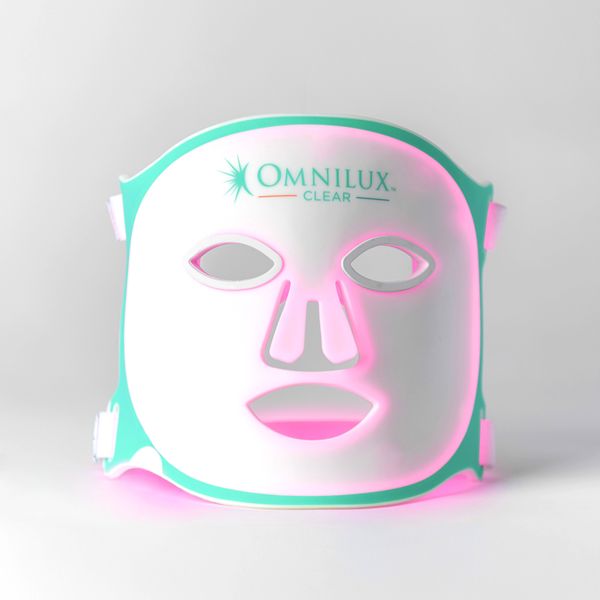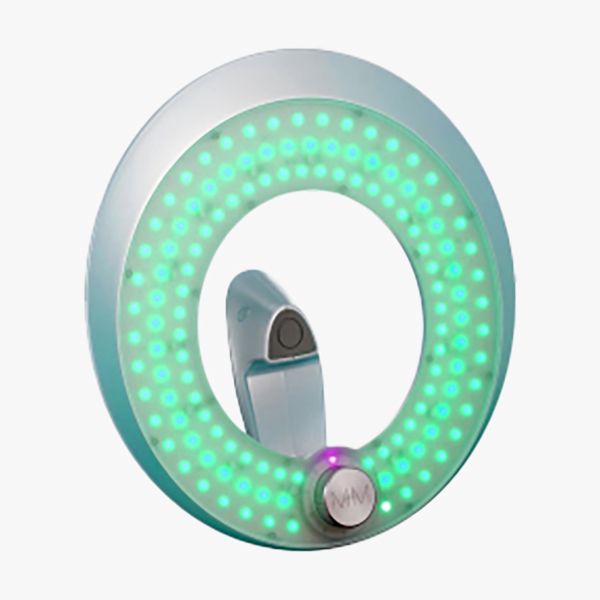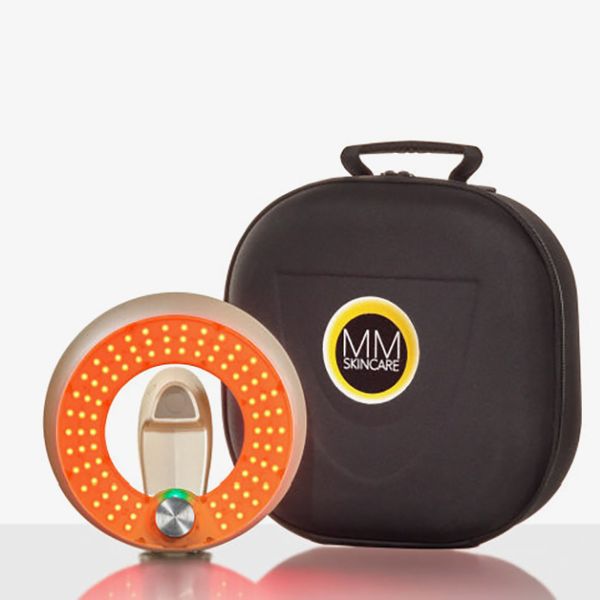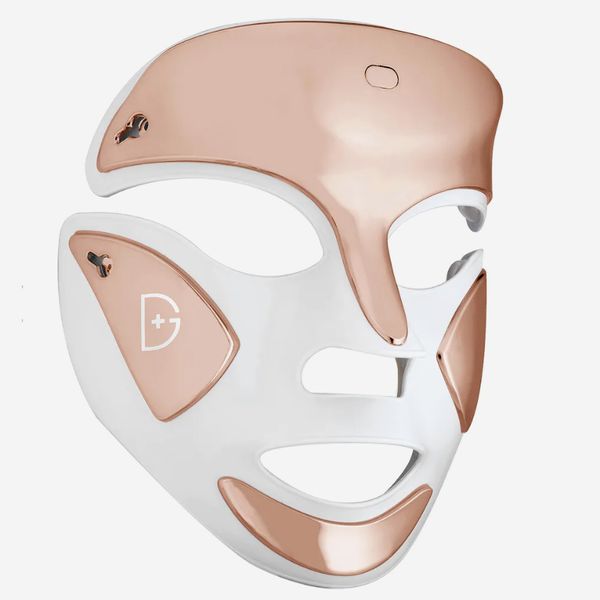
Dear Beauty Editor,
As a woman who is starting to show signs of aging and still gets cystic acne (what a cruel world!), I want to know: Do light-therapy masks really work? Should I get one? Which one?
There’s nothing quite like a parade of people in glowing stormtrooper masks to make you feel like maybe you’re not doing enough for your skin. I’m talking, of course, about all the TikTok-beloved LED masks that claim to treat acne, smooth wrinkles, plump skin, fade hyperpigmentation — and the list goes on. At this point, I wouldn’t be surprised to see one that promises to whiten your teeth and grow your eyelashes, too. But peel back the hyperbole and there is indeed some good science behind light therapy, says Jared Jagdeo, M.D., an associate professor of dermatology and the director of the Center for Photomedicine at SUNY Downstate Medical Center, who has co-authored numerous studies documenting the skin benefits of light therapy.
Different wavelengths (i.e., colors) can help with different things. Jagdeo says red light stimulates collagen and helps reduce inflammation, while blue light has antibacterial and antimicrobial properties — benefits that would help someone like you who’s dealing with cystic acne and the first signs of aging (yes, cruel world!). There’s also yellow light, which can improve photoaged skin and reduce redness. Even green light is beneficial: Dermatologist Ellen Marmur, M.D., told me new research from Rockefeller University that was just presented at the Global Aesthetics Conference in Miami shows that green light “increased growth factor and collagen pathways while greatly reducing inflammatory pathways.” (Marmur’s company, MMSkincare, created the device used in that research.)
The best light-therapy results come from treatments in a doctor’s office with medical devices that have been calibrated and tested to deliver specific wavelengths at specific power densities. But those types of treatments are time-consuming and expensive, which is why lots of companies have come out with these at-home light masks. And that’s where things get tricky.
While many of them are “FDA cleared,” that just means the FDA regards them as safe and unlikely to cause burns or eye damage or to make your skin condition worse. “For the most part, the FDA-cleared LED devices are pretty much very safe, but safe is different from ‘safe and effective,’” says Jagdeo. “It’s not like there’s a governing body that measures the power densities of these home devices.”
In fact, one dermatologist I spoke to, who asked not to be named, told me they had worked with the makers of an at-home LED device that seemed really effective. This doctor suggested that the company do a clinical trial because the device would likely perform well. The company replied, in essence, “Why bother?” It said clinical trials were expensive, so it planned to put all its money into marketing and let the market dictate its effectiveness. Meaning: If it sells, that’s proof it works.
As a beauty editor, I can tell you there are plenty of popular beauty devices and skin-care products with gangbuster sales that would probably be no more effective than a placebo in a clinical trial. So let’s see if we can do better.
First, which brand should you get? Jagdeo says to look for a company with peer-reviewed published research showing the benefits of its LED devices. He knows of one brand, Omnilux, that makes anti-aging and anti-acne devices and has met that criteria. Marmur suggests brands with clinical studies backing their claims. She says the research should be presented clearly on the company’s website, but it’s even better if it has been published as abstracts or pilot studies in peer-reviewed journals or presented at national meetings with CME-approved content. (Her MMSkincare’s MMSphere devices pass that bar.) This doesn’t mean other LED masks and light-therapy devices don’t work — just that their claims or benefits haven’t been vetted with peer-reviewed clinical research. Reviews from customers and company-run tests do still count for something.
As for the type of device, it should be FDA-cleared for safety, according to all the doctors I interviewed. If you want a wearable option, Jagdeo suggests choosing a mask that conforms closely to the contours of your face, rather than a pen or wand you move around or a loose face shield. Marmur remembers one hockey-style mask that was FDA-cleared but was still pulled from the market over concerns that the LEDs were too close to the eyes and had caused retina damage for some people. The consensus is that your skin would benefit from both red- and blue-light treatment. The blue will help to reduce the bacteria that cause cystic acne, while the red helps to reduce inflammation in pimples and combat signs of aging like texture changes and fine lines.
With all that in mind, the Omnilux Clear is a good option. It’s marketed to people with acne but has both blue and red LEDs so it would give you some of the anti-aging benefits you’re after. The DRx SpectraLite mask from Dr. Dennis Gross Skincare is another one; it’s FDA-cleared and has the wavelengths you want. And Marmur’s company makes two devices (the MMSphere 2.0 and MMSphere 2GO) that combine the benefits of red and blue light into one purple-light setting. “It’s great for acne-prone aging skin,” she says. “Use it once a day, morning or night, for 20 minutes.” She adds that if your signs of aging are things like broken capillaries, sun damage, redness, hyperpigmentation, or uneven skin tone, green light could also be beneficial. (The MMSpheres have that setting, too.)
Whichever device you select, use it exactly as directed. There are some LED treatments you should do only two to four times a week, says Jagdeo. And if your device comes with eye protection, use it. Finally, as with all skin-care treatments, consistency is key. So really think about whether you’re the type of person who will sit down for 20 minutes daily or a few times a week to bathe in LED light. These gadgets cost a lot more than a spiralizer, so the last thing you want is to get one now and end up putting it on a Buy Nothing group when that January urge to reorganize strikes.
LED-Therapy Devices
These dermatologist-approved light devices really work.
This FDA-cleared mask features simultaneous red and blue light therapy and conforms closely to the contours of your face — an important characteristic of a good mask, according to Jagdeo.
With nine light settings and clinically proven results, these FDA-cleared devices help with acne and signs of aging.
The smaller sphere, which also has nine light settings targeted for the face and neck, is a solid option too at an affordable price point.
No patience for a long treatment? This mask (FDA-cleared with company clinicals to back its claims) delivers red and blue light in one three-minute session per day.
Jennifer Sullivan answers all your beauty-related questions with practical advice and zero judgment. Send your questions to AskABeautyEditor@nymag.com. (By emailing, you agree to the terms here.)









